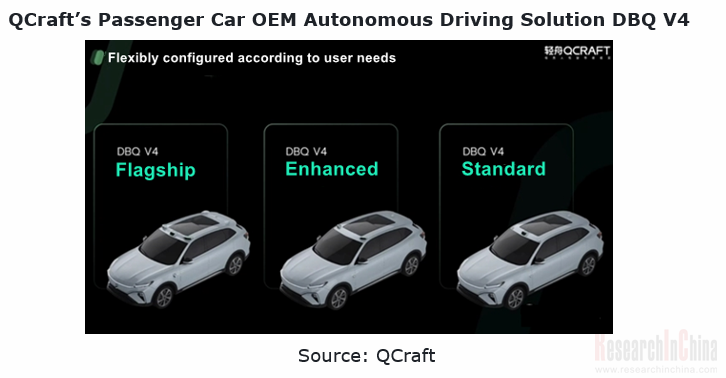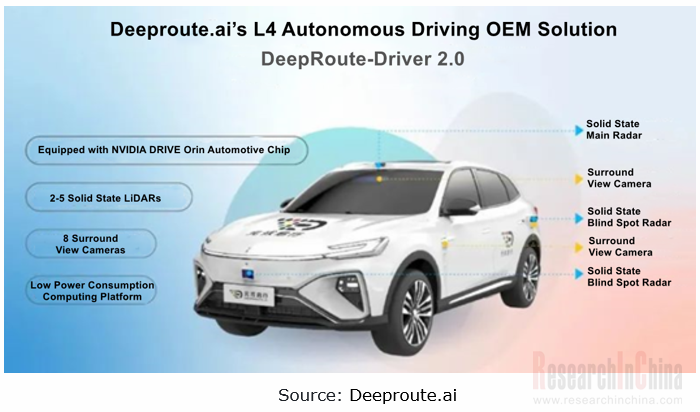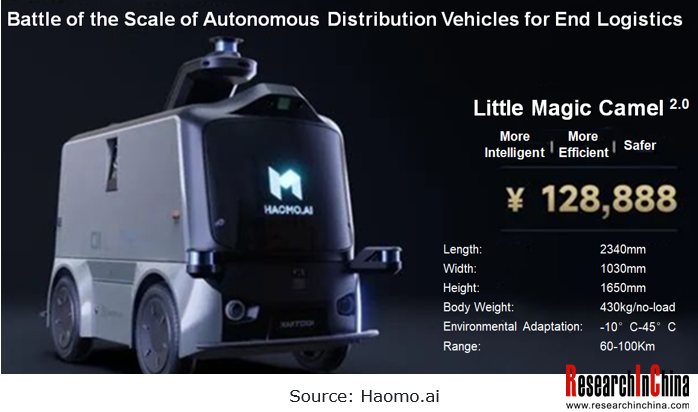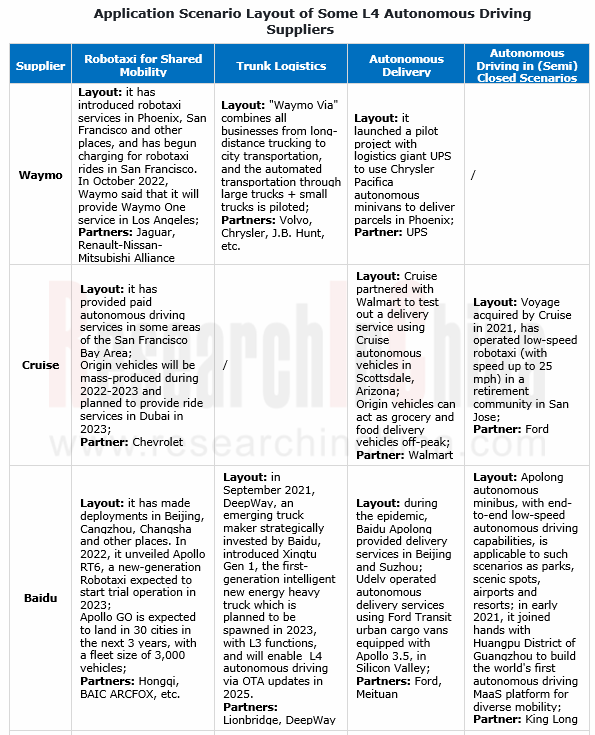L4 autonomous driving research: the industry enters a new development phase, "dimension reduction + cost reduction".
L3/L4 autonomous driving enjoys much greater policy support.
The development of L3/L4 autonomous driving needs both policy and technology support. Since 2022, China has given far greater policy support to high-level autonomous driving.
The Development Plan for New Energy Vehicle Industry (2021-2035) issued by the State Council indicates that "by 2025, L4 vehicles will be commercialized in limited areas and specific scenarios, and by 2035, L4 vehicles will find massive application."
On March 1, 2022, the national recommended standard GB/T 40429-2021 Taxonomy of Driving Automation for Vehicles came into force. In November 2022, the Ministry of Industry and Information Technology together with the Ministry of Public Security organized the drafting of Notice on Piloting Entry and Road Travel of Intelligent Connected Vehicles (Draft for Comments), suggesting piloting the entry of production-ready intelligent connected vehicles with autonomous driving functions (L3 and L4 in the GB/T 40429-2021 standard).
As concerns local governments, the Administrative Rules of Beijing Municipality for Autonomous Shuttles in the Pilot Areas Carrying out Intelligent Connected Vehicle Policies (Road Test and Demonstration Application) released in November 2022, is China’s first policy to give the corresponding right of way in the form of coding to autonomous shuttles. In August 2022, the Regulation on the Administration of Intelligent Connected Vehicles in Shenzhen Special Economic Zone came into effect. It is China’s first L3 autonomous driving regulation that highlights the first clear identification of accident responsibilities.
As the knockout starts, L4 autonomous driving suppliers seek "cost reduction + dimension reduction", and the industry enters the phase of large-scale commercial application.
At present, the installation rate of autonomous driving functions in vehicles is on the rise, and L2/L2+ autonomous driving technology has been relatively mature. The competition in the market is white hot. To gain more competitive edges, OEMs and autonomous driving solution providers compete to enter the track of higher-level autonomous driving.
Yet high-level autonomous driving consumes more capital, and is unlikely to build a full commercial closed-loop in the short term. In October 2022, Argo AI, a star start-up specializing in L4 autonomous driving, declared bankruptcy due to the capital chain rupture, a result of the inability to attract further investments, as its backers Ford and Volkswagen decided to stop investing in it.
Despite ceasing to invest in Argo AI and turning the focus on L2+/L3 that is easier to implement, Ford is still optimistic about L4 autonomous driving, but chooses not to develop on its own. It would team up with L4 autonomous driving solution providers in the future.
The case of Argo AI shows the challenges faced by L4 autonomous driving suppliers in current stage. If they do not try to develop real commercial solutions, they may eventually be weeded out by the market under capital pressure. To run farther on L4 autonomous driving track, all major suppliers aim at the mass production OEM market of passenger cars and embark on “dimension reduction” application, while working hard on L4 technology.
(1) “Dimension reduction” application
QCraft: propose the dual engine strategy. On one hand, based on public road L4 autonomous driving software and hardware solutions, it makes continuous efforts to improve its technical competence; on the other hand, based on the mass production and large-scale application of autonomous driving for OEM market, it keeps expanding application scenarios.
In May 2022, QCraft introduced DBQ V4, an autonomous driving solution for passenger car OEM market. Supporting 1 to 5 LiDARs, 0 to 4 blind spot radars, 6 radars and 12 perception cameras, it enables 360-degree perception without missing blind spots and dead corners, and allows mutual redundancy between left and right. It also packs a customized traffic light recognition camera. The solution is expected to be mass produced and mounted on vehicles during 2023-2024.
DBQ V4 offers standard and high configuration versions. The high configuration version has all L4 autonomous driving functions. Compared with high configuration version, the standard version features a slightly lower configuration, but it can still enable 99% L4 autonomous driving capabilities. The DBQ V4 autonomous driving solution integrates full-stack autonomous driving software and hardware technologies independently developed by QCraft. The standard version with a reduced LiDAR configuration carries a computing platform with lower computing power, cutting down the mass production cost to about RMB10,000. The mass-produced solution for the OEM market also enables driving and parking integrated functions.

Cruise: since 2021, it has worked to build Ultra Cruise intelligent driving system for GM. This solution is mainly mounted on the high-end vehicle models of GM and complements the Super Cruise system, helping GM to apply driving assistance technologies to all of its models.
Compared with Super Cruise, Ultra Cruise has added some new autonomous driving functions:
?Follow the internal navigation route and keep moving forward;
?Observe the speed limit
?Support automatic and on-demand lane change
?Support automatic left and right turns
?Support close object avoidance

“Cost reduction” application
In addition, the high cost is also a major obstacle to the implementation of L4 autonomous driving products. In particular, for cost-sensitive passenger cars, it is obvious that L4 autonomous driving that generally costs hundreds of thousands of yuan doesn’t justify it. All suppliers therefore have begun to vigorously "cut down cost".
Deeproute.ai: in June 2022, Deeproute.ai launched DeepRoute-Driver 2.0, a low-cost L4 autonomous driving system worth USD10,000 (about RMB64,000). This solution carries 2 to 5 solid-state LiDARs and 8 cameras, Nvidia Orin high computing power automotive chip, integrated navigation and HD map, enabling high-level autonomous driving.
Deeproute.ai says that in the future the cost of L4 autonomous driving could be lowered to less than RMB20,000 by cooperating with conventional OEMs for mass production and purchasing hardware equipment uniformly.

Haomo.ai: in April 2022, Haomo.ai launched Little Magic Camel 2.0, a product priced RMB128,800 for a single vehicle. Haomo.ai can build RMB100,000 autonomous distribution vehicles, mainly because its autonomous distribution vehicles reuse its passenger car autonomous driving technologies, and cost less by virtue of passenger car supply chain advantages. In terms of hardware, Little Magic Camel 2.0 that bears an automotive perception kit and ICU 3.0, a computing platform with high computing power can cover all medium- and low-speed road scenarios and all road conditions on urban public roads.

Technology reuse helps to expand multiple application scenarios for L4 autonomous driving systems.
Affected by technology maturity and regulatory restrictions, L4 autonomous driving is available to relatively limited application scenarios in the short run. The main application scenarios include Robotaxi, autonomous delivery, autonomous shuttle, and autonomous logistics in (semi) closed scenarios.
For L4 autonomous driving is being piloted in application fields, the deployment scale is not large, and just with tweaks, L4 autonomous driving technology can be reused in different types of vehicles, so L4 suppliers rarely follow a single business line, and generally make multi-scenario deployments.

Global and China L4 Autonomous Driving and Start-ups Report, 2022 highlights the following:
 L4 autonomous driving (policies, standards, regulations, etc.);
L4 autonomous driving (policies, standards, regulations, etc.);
 L4 autonomous driving market (size, competitive landscape, etc.);
L4 autonomous driving market (size, competitive landscape, etc.);
 Key technologies (algorithm, HD map and positioning, data closed-loop, vehicle-road-cloud cooperation, redundancy, etc.) of L4 autonomous driving (major suppliers, technical solutions, etc.);
Key technologies (algorithm, HD map and positioning, data closed-loop, vehicle-road-cloud cooperation, redundancy, etc.) of L4 autonomous driving (major suppliers, technical solutions, etc.);
 Application scenarios (Robotaxi, autonomous shuttle, autonomous delivery, autonomous truck, etc.) of L4 autonomous driving (major suppliers, technical solutions, operation, etc.);
Application scenarios (Robotaxi, autonomous shuttle, autonomous delivery, autonomous truck, etc.) of L4 autonomous driving (major suppliers, technical solutions, operation, etc.);
 OEMs’ layout and planning of L4 autonomous driving solutions;
OEMs’ layout and planning of L4 autonomous driving solutions;
 Major L4 technology suppliers (technical solution iterations, application and layout of L4 products, etc.).
Major L4 technology suppliers (technical solution iterations, application and layout of L4 products, etc.).
China Automotive Lighting and Ambient Lighting System Research Report, 2025
Automotive Lighting System Research: In 2025H1, Autonomous Driving System (ADS) Marker Lamps Saw an 11-Fold Year-on-Year Growth and the Installation Rate of Automotive LED Lighting Approached 90...
Ecological Domain and Automotive Hardware Expansion Research Report, 2025
ResearchInChina has released the Ecological Domain and Automotive Hardware Expansion Research Report, 2025, which delves into the application of various automotive extended hardware, supplier ecologic...
Automotive Seating Innovation Technology Trend Research Report, 2025
Automotive Seating Research: With Popularization of Comfort Functions, How to Properly "Stack Functions" for Seating?
This report studies the status quo of seating technologies and functions in aspe...
Research Report on Chinese Suppliers’ Overseas Layout of Intelligent Driving, 2025
Research on Overseas Layout of Intelligent Driving: There Are Multiple Challenges in Overseas Layout, and Light-Asset Cooperation with Foreign Suppliers Emerges as the Optimal Solution at Present
20...
High-Voltage Power Supply in New Energy Vehicle (BMS, BDU, Relay, Integrated Battery Box) Research Report, 2025
The high-voltage power supply system is a core component of new energy vehicles. The battery pack serves as the central energy source, with the capacity of power battery affecting the vehicle's range,...
Automotive Radio Frequency System-on-Chip (RF SoC) and Module Research Report, 2025
Automotive RF SoC Research: The Pace of Introducing "Nerve Endings" such as UWB, NTN Satellite Communication, NearLink, and WIFI into Intelligent Vehicles Quickens
RF SoC (Radio Frequency Syst...
Automotive Power Management ICs and Signal Chain Chips Industry Research Report, 2025
Analog chips are used to process continuous analog signals from the natural world, such as light, sound, electricity/magnetism, position/speed/acceleration, and temperature. They are mainly composed o...
Global and China Electronic Rearview Mirror Industry Report, 2025
Based on the installation location, electronic rearview mirrors can be divided into electronic interior rearview mirrors (i.e., streaming media rearview mirrors) and electronic exterior rearview mirro...
Intelligent Cockpit Tier 1 Supplier Research Report, 2025 (Chinese Companies)
Intelligent Cockpit Tier1 Suppliers Research: Emerging AI Cockpit Products Fuel Layout of Full-Scenario Cockpit Ecosystem
This report mainly analyzes the current layout, innovative products, and deve...
Next-generation Central and Zonal Communication Network Topology and Chip Industry Research Report, 2025
The automotive E/E architecture is evolving towards a "central computing + zonal control" architecture, where the central computing platform is responsible for high-computing-power tasks, and zonal co...
Vehicle-road-cloud Integration and C-V2X Industry Research Report, 2025
Vehicle-side C-V2X Application Scenarios: Transition from R16 to R17, Providing a Communication Base for High-level Autonomous Driving, with the C-V2X On-board Explosion Period Approaching
In 2024, t...
Intelligent Cockpit Patent Analysis Report, 2025
Patent Trend: Three Major Directions of Intelligent Cockpits in 2025
This report explores the development trends of cutting-edge intelligent cockpits from the perspective of patents. The research sco...
Smart Car Information Security (Cybersecurity and Data Security) Research Report, 2025
Research on Automotive Information Security: AI Fusion Intelligent Protection and Ecological Collaboration Ensure Cybersecurity and Data Security
At present, what are the security risks faced by inte...
New Energy Vehicle 800-1000V High-Voltage Architecture and Supply Chain Research Report, 2025
Research on 800-1000V Architecture: to be installed in over 7 million vehicles in 2030, marking the arrival of the era of full-domain high voltage and megawatt supercharging.
In 2025, the 800-1000V h...
Foreign Tier 1 ADAS Suppliers Industry Research Report 2025
Research on Overseas Tier 1 ADAS Suppliers: Three Paths for Foreign Enterprises to Transfer to NOA
Foreign Tier 1 ADAS suppliers are obviously lagging behind in the field of NOA.
In 2024, Aptiv (2.6...
VLA Large Model Applications in Automotive and Robotics Research Report, 2025
ResearchInChina releases "VLA Large Model Applications in Automotive and Robotics Research Report, 2025": The report summarizes and analyzes the technical origin, development stages, application cases...
OEMs’ Next-generation In-vehicle Infotainment (IVI) System Trends Report, 2025
ResearchInChina releases the "OEMs’ Next-generation In-vehicle Infotainment (IVI) System Trends Report, 2025", which sorts out iterative development context of mainstream automakers in terms of infota...
Autonomous Driving SoC Research Report, 2025
High-level intelligent driving penetration continues to increase, with large-scale upgrading of intelligent driving SoC in 2025
In 2024, the total sales volume of domestic passenger cars in China was...